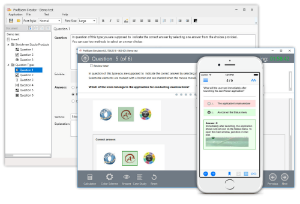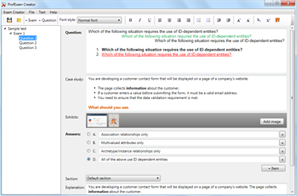File Info
| Exam | Managing Microsoft Teams |
| Number | MS-700 |
| File Name | Microsoft.MS-700.PremiumDumps.2025-04-02.340q.vcex |
| Size | 27 MB |
| Posted | Apr 02, 2025 |
| Download | Microsoft.MS-700.PremiumDumps.2025-04-02.340q.vcex |
How to open VCEX & EXAM Files?
Files with VCEX & EXAM extensions can be opened by ProfExam Simulator.
Coupon: MASTEREXAM
With discount: 20%
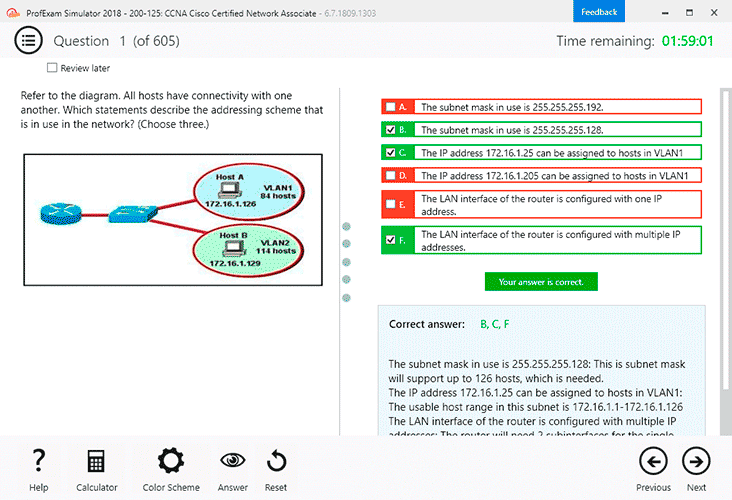

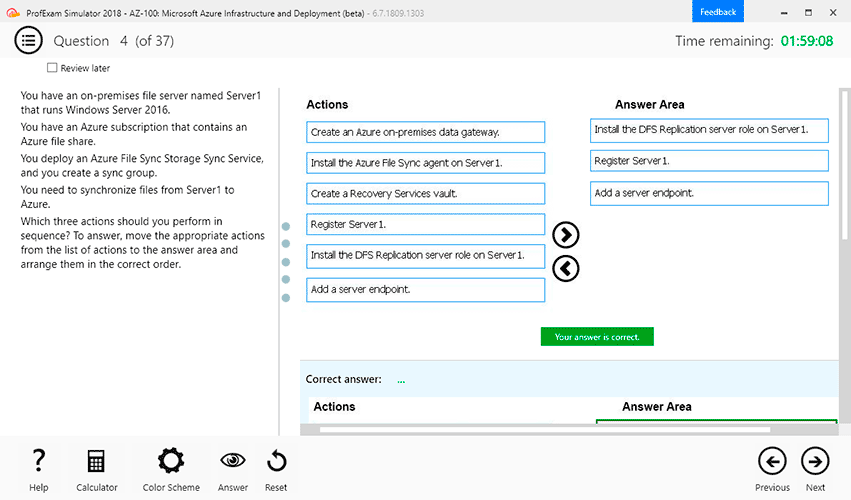
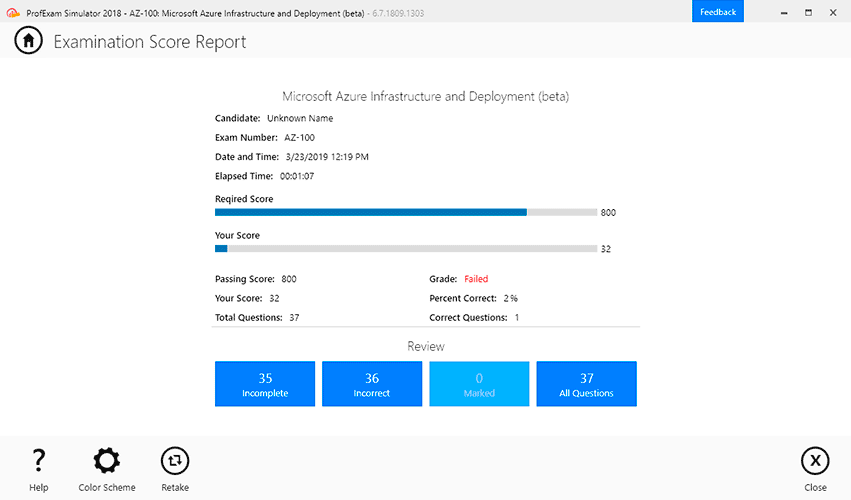
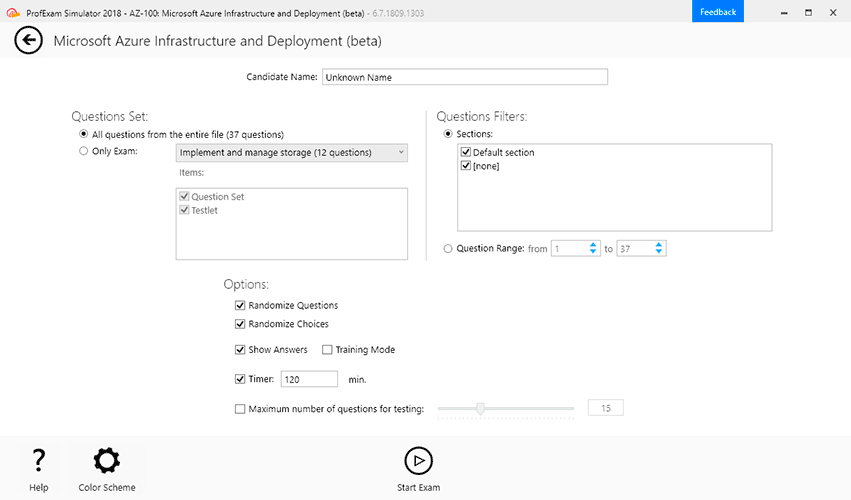

Demo Questions
Question 1
You work as a Systems Administrator for your company. The company has recently purchased a subscription to Microsoft 365.
All users in your company have a Microsoft 365 E3 license.
You are in the process of configuring Microsoft Teams.
You need to configure Microsoft Teams to ensure that users within your company can collaborate with users in a partner company. You plan to create guest accounts for users in the partner company.
Users with Guest accounts must not be able to invite other guests.
Only users in the partner company must be able to collaborate with your users by using Microsoft Teams.
Which of the following should you configure?
- The external sharing settings in the SharePoint Admin Center.
- The external collaboration settings in Azure Active Directory.
- C. The Anonymous users can join a meeting setting the in the Teams Meeting Settings.
- D. The Global Meeting Policy in the Teams Admin Center.
Correct answer: B
Explanation:
While B is indeed the best answer it is not THE answer. When doing this on this level it affects all services including SharePoint. It is best to do this in the Microsoft management portal in Orgs Settings>Teams. This way the setting will only work inside teams and you are still able to invite guests to SharePoint. While B is indeed the best answer it is not THE answer. When doing this on this level it affects all services including SharePoint. It is best to do this in the Microsoft management portal in Orgs Settings>Teams. This way the setting will only work inside teams and you are still able to invite guests to SharePoint.
Question 2
You work as a Systems Administrator for your company. The company has recently purchased a subscription to Microsoft 365.
All users in your company have a Microsoft 365 E3 license.
You are in the process of configuring Microsoft Teams.
You enable Guest access in Microsoft Teams to allow users in your company to collaborate with external users.
A company security policy states that guest users should not be able to use their cameras during Microsoft Teams meetings. Company users should be able to use their cameras during Microsoft Teams meetings.
You need to configure Microsoft Teams to meet the security requirement.
Which of the following actions should you perform in the Microsoft Teams Admin Center?
- Configure the External access settings in Org-wide settings.
- Configure the Teams settings in Org-wide settings.
- Configure the Guest access settings in Org-wide settings.
- Configure the Audio & Video settings in the default Meeting Policy
Correct answer: C
Explanation:
The correct option is in the Teams Admin Center, under users, select "Guest Access". From there, below the meeting options, you can turn off "IP Video" for guest. The correct option is in the Teams Admin Center, under users, select "Guest Access". From there, below the meeting options, you can turn off "IP Video" for guest.
Question 3
You work as a Microsoft 365 Administrator for your company. All users have Microsoft 365 licenses.
Users frequently collaborate by using private chats in Microsoft Teams.
You need to ensure that a single user is unable to permanently delete private chats.
Which of the following should you configure?
- The user's Microsoft 365 license options in the Microsoft 365 Admin Center.
- A meeting policy in Microsoft Teams.
- A litigation hold on the user's mailbox.
- A Sensitivity Label in the Security & Compliance Admin Center.
Correct answer: C
Explanation:
Answer C is correct.To preserver electronically store information (ESI), you can put selected users or all users on legal hold to make sure that all message interchange are discoverable by the organization's compliance manager or teams admins.This has to be done in the Microsoft 365 Compliance center, creating a case to set the legal hold. Answer C is correct.
To preserver electronically store information (ESI), you can put selected users or all users on legal hold to make sure that all message interchange are discoverable by the organization's compliance manager or teams admins.
This has to be done in the Microsoft 365 Compliance center, creating a case to set the legal hold.
Question 4
You work as a Systems Administrator for your company. The company has departments named Sales, Accounts, Research and Production.
The company has recently purchased a subscription to Microsoft 365.
All users in your company have a Microsoft 365 E3 license.
You are in the process of configuring Microsoft Teams. You plan to create a team for each of the company departments.
All users have the Microsoft Teams desktop client installed.
You need to ensure that the Research team is labelled as Confidential when viewed in the Microsoft Teams client.
Which of the following actions should you perform?
- Configure and publish a Sensitivity Label in the Security & Compliance admin center.
- Configure and publish a Retention Label in the Security & Compliance admin center.
- Configure a Teams policy in the Microsoft Teams admin center.
- Configure the Meeting Settings in the Microsoft Teams admin center.
Correct answer: A
Explanation:
In the Security & Compliance Center, you can configure and publish a Sensitivity Label, that you can applied during a team creation. Sensitivity labels allow Teams admin to protect and regulate access to sensitive organizational content, the benefit of using it is that their policies are automatically enforced end-to-end. A team owner can change the sensitivity label and the privacy setting of the team at any time by editing the Team. In the Security & Compliance Center, you can configure and publish a Sensitivity Label, that you can applied during a team creation. Sensitivity labels allow Teams admin to protect and regulate access to sensitive organizational content, the benefit of using it is that their policies are automatically enforced end-to-end. A team owner can change the sensitivity label and the privacy setting of the team at any time by editing the Team.
Question 5
You work as a Systems Administrator for your company. The company has departments named Sales, Accounts, Research and Production.
The company has a subscription to Microsoft 365. All users in your company have a Microsoft 365 E5 license.
You have configured a Team for each of the departments.
Currently, users in any department can use Microsoft Teams to communicate with users from any other department.
You need to configure the environment to ensure that users in the Research team can only communicate with other users in the Research team by using Microsoft Teams.
What should you do?
- Configure a Teams Meeting policy.
- Configure Information Barrier policies.
- Configure an App Protection policy.
- Configure Conference Bridges.
Correct answer: B
Explanation:
"Configure Information Barriers"With Information barriers you can define policies that are designed to prevent certain segments of users from communicating with each other or allow specific segments to communicate only with certain other segments.When you define policies for information barriers, you will work with user account attributes such as department. With this you can prevent unauthorized collaboration. "Configure Information Barriers"
With Information barriers you can define policies that are designed to prevent certain segments of users from communicating with each other or allow specific segments to communicate only with certain other segments.
When you define policies for information barriers, you will work with user account attributes such as department. With this you can prevent unauthorized collaboration.
Question 6
You work as a Systems Administrator for your company. The company has several departments.
The company has a subscription to Microsoft 365. All users in your company have a Microsoft 365 E5 license.
You have configured a Team for each of the departments.
You need to ensure that you are notified if a user creates a new Team by using the Create a Team option in the Microsoft Teams client.
Which of the following actions should you perform?
- Configure the External Collaboration settings in the Azure Active Directory admin center.
- Configure a supervision policy in the Security & Compliance admin center.
- Configure an eDiscovery Case in the Security & Compliance admin center.
- Configure an alert policy in the Security & Compliance admin center.
Correct answer: D
Explanation:
D is correct.There is plenty of policy that you can use to prevent abusive usage.Reference:https://docs.microsoft.com/en-us/microsoft-365/compliance/alert-policies?view=o365-worldwide D is correct.
There is plenty of policy that you can use to prevent abusive usage.
Reference:
https://docs.microsoft.com/en-us/microsoft-365/compliance/alert-policies?view=o365-worldwide
Question 7
You work as a Systems Administrator for your company. The company has a subscription to Microsoft 365.
All users in your company have a Microsoft 365 E5 license.
A user named User1 has the Microsoft Teams desktop client on his Windows 10 client computer.
User1 reports several problems when using Microsoft Teams.
You need to view the debug logs on User1's computer.
Which of the following actions should you perform to generate the debug logs?
- Press the following key combination: Ctrl+Alt+Shift+1.
- Right click on the Teams icon and select Get Logs.
- Use Windows Event Viewer and browse to the Application Log.
- Run a Usage report in the Teams admin center.
Correct answer: A
Explanation:
One is clicking the MS Teams icon in the system tray and select "Get logs" (this works for MacOS and Windows).In another hand we have the option to press (in windows) CTRL + Alt + Shift + 1. (In MacOS) Option + Command + Shift + 1.In the question is not specifiying the Teams in the icon system try and either the operative system. In my opinion both answer A and B should be correct. I have to choose one, I will select the A, because the exam is for an MS Teams admin role which means you know more details to get the information. One is clicking the MS Teams icon in the system tray and select "Get logs" (this works for MacOS and Windows).
In another hand we have the option to press (in windows) CTRL + Alt + Shift + 1. (In MacOS) Option + Command + Shift + 1.
In the question is not specifiying the Teams in the icon system try and either the operative system. In my opinion both answer A and B should be correct. I have to choose one, I will select the A, because the exam is for an MS Teams admin role which means you know more details to get the information.
Question 8
Your company has a subscription to Microsoft 365. All users in your company have a Microsoft 365 E5 license.
All users use Microsoft Teams for collaboration.
A manager wants to be able to view the Microsoft Teams usage reports.
You need to assign the manager permission to view the usage reports. The solution must use the principle of least privilege.
Which of the following actions should you perform?
- Assign the Teams Communications Administrator role to the manager.
- Assign the Security Administrator role to the manager.
- Assign the Reports Reader role to the manager.
- Assign the Compliance Manager role to the manager.
Correct answer: C
Explanation:
C is correct. With Reports Reader Role, you can view Microsoft Teams Usage in Microsoft Admin Center under Reports>Usage>Microsoft Teams. C is correct. With Reports Reader Role, you can view Microsoft Teams Usage in Microsoft Admin Center under Reports>Usage>Microsoft Teams.
Question 9
You work as a Systems Administrator for your company. The company has a subscription to Microsoft 365. All users in your company have a Microsoft 365 E5 license.
All users in the company use Microsoft Teams for collaboration.
Users report that a team has been deleted in Microsoft Teams. The team was available yesterday.
You need to restore the deleted team.
Which tool should you use?
- The Microsoft Teams admin center
- The Microsoft Teams client app
- The Azure Active Directory admin center
- The Exchange Online admin center
Correct answer: C
Explanation:
You can restore the group in Azure AD Admin center, but also in the legacy Exchange Admin center. Another option is to restore the group in the Microsoft 365 admin center, but that was not a possible answer to this question. You can restore the group in Azure AD Admin center, but also in the legacy Exchange Admin center. Another option is to restore the group in the Microsoft 365 admin center, but that was not a possible answer to this question.
Question 10
Your company has a subscription to Microsoft 365. All users in your company have a Microsoft 365 E5 license.
All users use Microsoft Teams for collaboration.
An Office 365 group contains 300 users including 50 guest accounts. A Microsoft Team has been created from the group.
You need to ensure that the group contains only members and guest accounts that require access to the group.
Any members or guest accounts that are either inactive or no longer require access to the group should be removed. The solution must ensure that group membership is validated every month.
Which of the following should you configure?
- A Conditional Access policy
- A Supervision policy
- An Access Review
- A Teams policy
Correct answer: C
Explanation:
access review is a correct answer. access review is a correct answer.
Question 11
You work as a Systems Administrator for your company. The company has a subscription to Microsoft 365 and all users have a Microsoft 365 E3 license.
The company network includes Windows Server 2019 servers that host a Virtual Desktop Infrastructure (VDI).
All company users use the Microsoft Teams desktop client in non-persistent virtual desktops.
Microsoft has released an update to the Microsoft Teams client that includes several new features.
You need to ensure that all virtual desktop users are able to use the updated Microsoft Teams clients.
Which of the following actions should you perform?
- Configure the Teams Upgrade Policy with the Upgrade to Teams setting.
- Uninstall the Microsoft Teams MSI package from the VM image and install the latest version.
- Configure a Group Policy Object to deploy the latest version of the Microsoft Teams client.
- Configure Windows Updates on the servers hosting the VDI.
Correct answer: B
Explanation:
Install or update the Teams desktop app on VDIYou can deploy the Teams desktop app for VDI using a per-machine installation or per-user installation using the MSI package. Deciding on which approach to use depends on whether you use a persistent or nonpersistent setup and the associated functionality needs of your organization.For a dedicated persistent setup, either approach would work. However, for a non-persistent setup, Teams requires a per-machine installation in order to work efficiently. See the Non-persistent setup section.With per-machine installation, automatic updates are disabled. This means that to update the Teams app, you must uninstall the current version to update to a newer version. With per-user installation, automatic updates are enabled. For most VDI deployments, we recommend you deploy Teams using per-machine installation.To update to the latest Teams version, start with the uninstall procedure followed by latest Teams version deployment. Install or update the Teams desktop app on VDI
You can deploy the Teams desktop app for VDI using a per-machine installation or per-user installation using the MSI package. Deciding on which approach to use depends on whether you use a persistent or nonpersistent setup and the associated functionality needs of your organization.
For a dedicated persistent setup, either approach would work. However, for a non-persistent setup, Teams requires a per-machine installation in order to work efficiently. See the Non-persistent setup section.
With per-machine installation, automatic updates are disabled. This means that to update the Teams app, you must uninstall the current version to update to a newer version. With per-user installation, automatic updates are enabled. For most VDI deployments, we recommend you deploy Teams using per-machine installation.
To update to the latest Teams version, start with the uninstall procedure followed by latest Teams version deployment.
